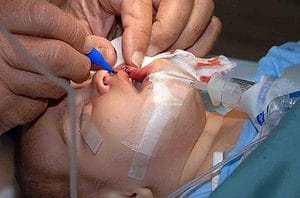Reconstructive surgery has made huge strides forward in the past few decades alone, helping countless people live a life closer to normal, freer from the immense harshness and pain that comes with damaged and exposed tissue. In the future, regenerative surgery will only evolve, and gene therapy is set to play a major role.
A recent study looked to assess the progress toward developing effective gene therapies for use in regenerative surgery. Researchers Padua University Hospital, Italy, led by Dr. Giorgio Giatsidis, found that a number of promising techniques have been reported that use gene therapy to grow skin, bone, and other tissues for reconstructive surgery. Moving them from the lab to the surgery room will however prove to be the biggest challenge the scientists working in these fields need to face.
“After two decades, regenerative surgery is an adolescent looking forward to growing up,” Dr. Giatsidis and coauthors write. “Despite extensive preclinical approaches, translation of gene therapy strategies into clinical trials is still a difficult and expensive process.”
What’s so appealing about gene therapy is that it can be employed to promote growth of just about any kind of tissue. These tissues can then be used for more efficient regenerative surgical treatments for numerous clinical needs. For instance, the review mentions tissue-engineered products to promote healing of diabetic skin ulcers, techniques using transplantation of genetically modified donor bone to promote bone growth, joint cartilage regeneration in patients with rheumatoid arthritis. Techniques to promote healing of tendons, regeneration of injured nerves, and growth of skin flaps for reconstructive surgery are all being explored.
With a way of readily growing tissue, surgeons would address their current biggest problem: lack of donor tissue. Small burns, for instance, can be easily corrected by transferring skin flaps from other parts of the body. If a person, however, has burns over a large surface of the body, then this technique won’t work so well for him. The same is for broken or shattered bones, muscles and the likes. Gene therapy sounds like a life saver, however the researchers first need to find a way to clinically introduce these techniques in an efficient and cheaply manner.
So far, the studies of diabetic ulcers and rheumatoid arthritis mentioned above are the only methods to show evidence of clinical effectiveness in human patients. “Even so,” the authors add, “cutting-edge gene therapy-based strategies in reconstructive procedures [are close] to setting valuable milestones for development of efficient treatments in a growing number of local diseases and injuries.”
The review was published Plastic and Reconstructive Surgery, the official medical journal of the American Society of Plastic Surgeons (ASPS).










